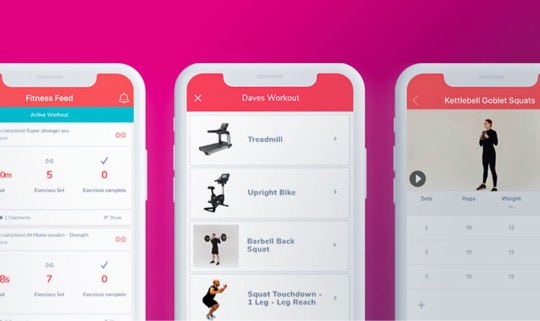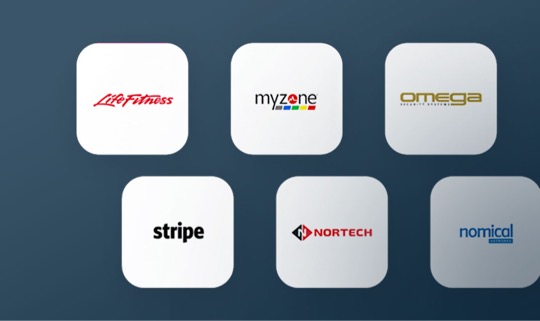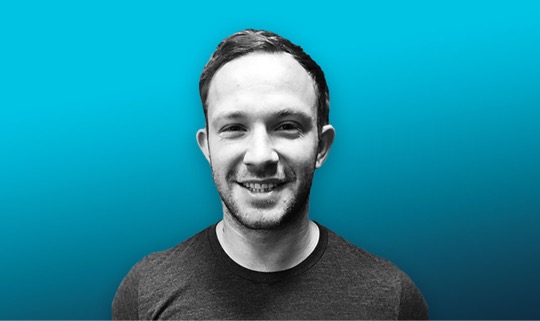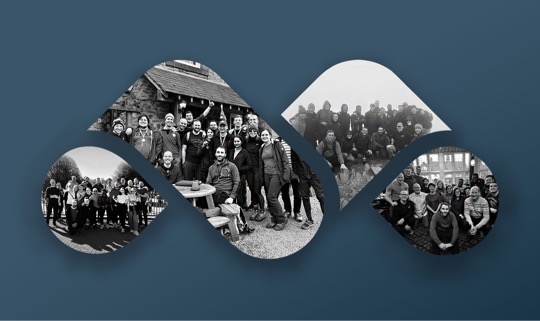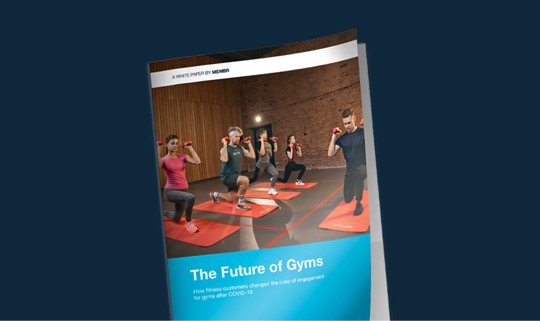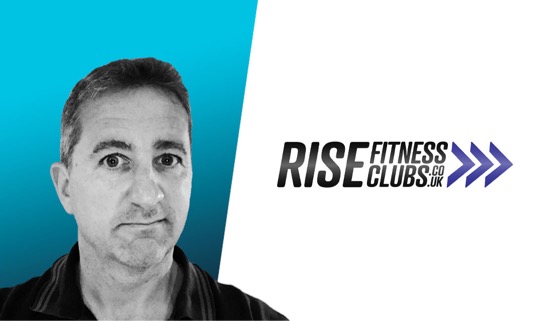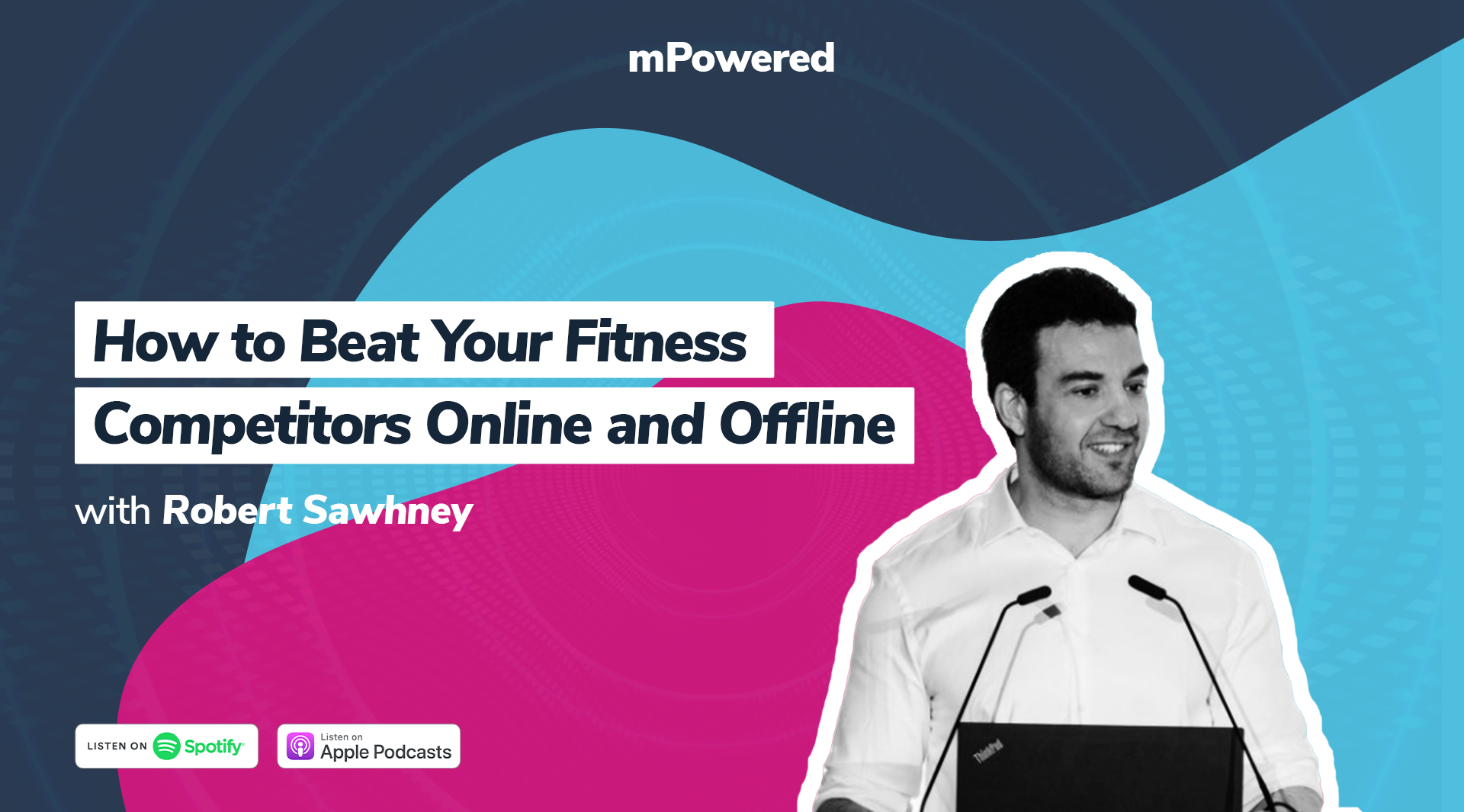00:00:48] Craig McNeill: So on this episode Back to the future, we have a special guest in a different time zone, which is awesome. Bob, welcome to mPowered.
[00:00:59] Bob Sawhney: Thanks Craig. Good to be here.
[00:01:01] Craig McNeill: So you’re ending your day and I’m starting my day so you’ve always got a smile on your face when you speak to me,
[00:01:07] (laughs) You’re based in Hong Kong?
[00:01:10] Bob Sawhney: Yeah. I’m based in Hong Kong.
[00:01:12] Craig McNeill: How long have you been in Hong Kong for?
[00:01:13] Bob Sawhney: Awggh, it’s been 20 plus years now, so quite a while. Yeah.
[00:01:18] Craig McNeill: Amazing. So for our listeners, can you give us your obligatory elevator pitch, who you are? Why are you in Hong Kong and you’ve got a nice English accent, then a little bit more about what you, what you’re doing in the fitness industry at the moment.
[00:01:33] Bob Sawhney: Yeah, will do so I’ve been in Hong Kong, as you said, 20 plus years from the UK originally. Very long story, how I get here, so I won’t get into that, but that can be found in some detailed books somewhere I’m sure. And I currently work for Life Fitness, one of the biggest equipment manufacturers in the world.
[00:01:51] Director of strategy as well as director of key accounts. And yeah, I’ve been in the fitness industry now back six, seven years, previously before Life Fitness another company Technogym, which most people will know. And then previously to that many years away from the industry, some 15 years in strategy consultancy.
[00:02:11] Few years in academia because I did my doctoral studies in business. And then way before that, working in the fitness industry, like many people do as a trainer, PT club manager, all that sort of thing when I was younger and then moved out of it for a number of years and then got back into it six, seven years ago.
[00:02:29] Craig McNeill: With a big difference that not only have you got your, your badges in the fitness industry. You also know a little bit, just a little bit about business…
[00:02:38] Bob Sawhney: Little bit about business. Yeah. Both from an academic and consulting perspective and being fortunate enough to have written a couple of books on the subject and quite a number of articles in various magazines, newspapers and journals.
[00:02:50] Yeah. So it’s, it’s a passion you know, I love business per se and particularly strategy. So yeah, it’s something that I have invested quite a lot of time in and picking up and learning yeah
[00:02:59] Craig McNeill: Brilliant. That’s amazing. So, because of your background, we thought we would have a topic around the competitors next door, and I’m going to kick in with my analogy. Everyone loves one. So, bit weirdly, we live in a house Bob at the moment, and we’ve got some neighbours to the left of us. Those neighbors have been there for quite a while. They’re going to be our traditional gyms, our competitors next door, the five pound cheaper per month for our members model.
[00:03:31] What have we got to do to keep our members the traditional neighbors next door competitors, next door, but more recently. There’s been a new build on the other side of our house, and there’s been houses going up quite quickly over the last few months and few days.
[00:03:49] So it’d be got to kind of find out what your thoughts are with that side of it in terms of, I love your white paper around ‘ If Apple built treadmills’. I thought it was really, really thought-provoking. I had to go away for a couple of hours and just digest it, just to kind of, wow! You know, this is, something that we really need to consider and understand more.
[00:04:10] And that’s, from my perspective, I want to understand more. So I’m really excited to listen to a couple of topics today with you, mate. So let’s start with traditional competitors. So what’s your thoughts on this in terms of the fitness industry can learn from other industries. And you’ve mentioned that you’ve worked in other industries of which again is so, so magical because we must learn from others when we’re in our own bubble.
[00:04:36] What is the most important thing to you? If you opened a gym up today, what would be the first strategy that you nail?
[00:04:45] Bob Sawhney: It’s a great question. I think, you know, the first thing I would be thinking about is what are the, what is the experience that I want to create and what kind of members I want to attract with that kind of experience? I think if I, if I gave a sort of a, a typical mundane answer, then everyone would talk about differentiation and how do I differentiate my facility from another facility?
[00:05:05] But even though it’s kind of mundane, it does sit at the center of what a health club would have to do. But I think, you know, going back to your competitors next door, it’s a great analogy because not only gyms, you know, traditional gyms or fitness clubs or health clubs, having that sort of concept that five years ago, six, seven years ago, whenever it was, that what they looked at next door was very much the other health club or fitness club.
[00:05:30] And I think now, accelerated by COVID, but obviously happening before COVID, I think most sophisticated fitness operators have been thinking, it’s not just the health club which is my competitor. It’s exercising in the park, it’s, you know, the boutiques which are coming out, it’s all the alternatives and substitutes, which have been around for donkey’s years.
[00:05:49] But they’re recognizing now more seriously because of the advent of digital fitness, I guess, but these are real potential competitors and we, as you know, in the same regard as equipment manufacturer, We thought of our competitors as traditional other manufacturers. And now we’re starting to recognize ‘oh no well perhaps not’, you know, they could be big tech firms.
[00:06:09] They could be the non-traditional firms like Peloton have come into the market. You know, these other, other firms that we may not have considered before. So I think the same thing then comes down to answer that question is that if you’re looking to experience a member you’re trying to deliver, then you’ve got to look at all the other experiences that are available to them.
[00:06:27] And how you’re going to create that experience, which is perhaps going to be different or provide more value than other types of solutions out there, and to be a bit more concrete, I’ll give a very specific example. If you were looking at a health club four or five years ago, You were just thinking that, you know, I need to give an induction, I need to give a program.
[00:06:45] I need to provide good service and I can probably differentiate to some degree and survive and do well. I think now it’s just become much more challenging because attrition rates in clubs are so high, lifetime values of a club member of three or 3.5 years. So they’re not very long. And so therefore you’re under a much greater challenge to, to achieve a different level of experience.
[00:07:05] So that means now it’s much more about how can I attract a member to the facility. But how can I keep them from a longer period of time? And now that differentiation or that experience revolves in my opinion, around behavioral science. So what can I do to motivate and keep members motivated to keep coming back to the facility?
[00:07:25] Does that require some sort of digital intervention to some degree? I’m sure it will for the majority of clubs, you know, I think the market has bifurcated, you see the bifurcation. You’re seeing the traditional sort of fitness club where may be very keen exercisers like you and I will always go regardless.
[00:07:42] But you’re seeing now that the industry trying to focus on growing the size of the pie, which means increasing the penetration. Right? So the average Jane or Joe that just doesn’t have that level of motivation. So, what are you going to do to engage those people and keep them coming? Not only attract them, but keep them coming.
[00:07:58] And I think that’s where the customer journey combined with behavioral science is going to be the key. And we’re seeing it to some degree. I think people obviously engaging technology and digital people are trying gamification. People are trying rewards. People are trying incentives. They’re all touching on those elements of behavioral science.
[00:08:14] We’ve yet to see once someone bring that together if I like in a really coherent ecosystem that is going to not crack the code, but get closer to cracking the code because noone’s really been able to do that. And I’m not blaming the industry at all I’m saying, not only in the industry, but outside the industry if you look at behavioral scientists, you look at those people working in that field, they’re still struggling to crack the code of changing behavior when it comes to fitness, that’s the Nirvana if you like.
[00:08:42] Craig McNeill: We’ve spoke before haven’t we, that when we talk about examples of experiences being where it should be, these examples of facilities then become case studies for more suppliers, and it becomes this, this holy grail.
[00:08:59] That actually sounds really bonkers that these guys who are doing the right experience, actually stand out – how crazy is that!? They should be across the board and everybody should be doing that. But these guys who are doing the right experience are standing out and everyone’s going, oh, we must do that. And then everyone ends up doing what someone else does.
[00:09:20] So going back to your very, very first point that you made there in terms of understanding the experience that you want to provide, how does that then begin? How do you start with that big big topic, because I think people know they should be doing it, but they don’t do it because they don’t know how to start that process.
[00:09:40] Bob Sawhney: Yeah. I think there’s two things to consider. One is, and again, it comes back to another mundane answer, but you need to understand who your segments are. And probably, I think a lot of people will say, you know, well, you know, I got the male demographic they’re between 30 and 40. And blah, blah, blah. And I got a female demographic.
[00:09:58] I think it just needs to get certain much more granular than that. I think if you look at sophisticated marketing companies, they would have segments of 30 or 40 different types based around obviously buyer personas, motivations, all of those things. So I think that’s one key point. Who’re your segments, how are you going to measure them?
[00:10:16] You’ve got to get granular. And you’ve got to think about the experiences that each of those are looking for. And I think personas is a great way to look at that. And I think the other part of it is what you just said earlier is absolutely right. Is that in any industry, you see someone who creates a certain value proposition, take the furniture interest in Ikea, and then you think about flat pack furniture, taking that home, assembling yourself, using just-in-time manufacturing approaches, I guess, to minimize stock and lower overall cost of inventory, those types of things that you see other competitors all start to copy, right? So the whole industry converges.
[00:10:52] Same thing in the fitness industry, right? You see clubs starting to use technology, data analytics, create sort of more sophisticated member journeys and experiences. And then of course they have additional services like spa recovery group exercise, small group training, hiit training, everything that we know to be very common now and the whole industry starts to converge.
[00:11:12] So I think the second part of that answer is you’ve got to recognize that competitive advantage is transient. It does not last forever. So if you’re in that school of thought, like Michael Porter’s five forces, generic strategies, building a moat, creating competitive advantage, which is long lasting.
[00:11:29] I just don’t think that exists anymore. You got to think now that competitive advantage is about constant change, constant renewal. How do we keep ahead of the competition by constantly reinventing ourselves? And that then gets into a whole discussion around company culture. How do we build that culture?
[00:11:47] What kind of culture are we looking for? What is the mindset of the CEO and the exec team, and that then that starts to blur the lines between strategy marketing culture. Because in my mind, they’re all the same thing. Whereas I think previously we’ve sort of seen them all as different things. This is strategy and strategies about positioning or planning.
[00:12:05] You know this is culture, and culture’s about having an employee engagement service that, you know, survey to make people happy. And then marketing is about promotion and things like that. Where in my mind, they all come to the same thing. The customer value proposition is the most important thing. That’s driven by marketing because marketing allows you to understand the customer and the value they’re seeking.
[00:12:26] That means you need a marketing culture, but not a marketing culture from a promotion perspective, but from a value delivery perspective. And then that means your strategy needs to be based around how can I create a culture which allows me to create that value delivery. So if you look at companies that’ve done it very well, just a simple example, like Starbucks, if you think about it, working in a Starbucks is a kind of a mundane job.
[00:12:49] But, you know, Starbucks have made it to an experience, you know, compared to other coffee shops, I think, or coffee chains or food and beverage outlets that has differentiated them. You know, some people will say, you know, the coffee tastes terrible if I put it in a cup and I compare it with a nice coffee, it doesn’t taste good, but it’s about the overall experience.
[00:13:06] And they’ve done that by engaging their employees, number one. Giving them a career path; ok, you do ABC, you will achieve ABC over a certain number of years. You have a stake in the business because you have a stake in your future. And I think that’s one of the challenges that our industry’s always faced, is that you know, I’m a fitness instructor, I get 20 grand a year. This guy’s going to pay me 25 grand I’ll move on tomorrow. And so there hasn’t been that capability I think within a lot of the, within a lot of the people operating within the health and fitness industry of engaging their employees properly, understanding what that engagement means and how that relates to the delivery of customer value.
[00:13:46] Craig McNeill: Absolutely. So everything has a knock on effect doesn’t it? If you don’t do the foundations correct. And it’s not even doing the foundations, correct. It’s making sure that you’ve put the foundations in place. And in the first instance. So there’s many examples there where you’ve actually got staff engaging with your members and these staff are self-employed members of staff from a personal training point of view.
[00:14:13] They’ve got their own business running inside your business, which then completely has a pull-push effect where they’re interested in what they’re doing at that time. They need more clients. They approach the members of the gym, hopefully in a great way, but sometimes not in a great way where they’re a little bit more aggressive in the sales approach.
[00:14:36] And if this is the wrong culture for the gym, it then has that snowball effect. Now I’m going into the detail there, but. I’ve just took from what you’re saying there is that if we don’t start off in the right way, these small little scenarios will build and build and build and build and build. And all of a sudden we have chaos.
[00:14:56] Bob Sawhney: Yeah, absolutely. If you, if you take a, another specific example, you think about the way that most instructors or personal trainers are remunerated within a club, because the way their clubs, remunerate people as a big impact on my behavior, which therefore has a huge impact on culture is that the more personal training packages I sell, the more money I make, but I don’t necessarily get incentivized or rewarded for walking the gym floor, interacting with members who don’t buy personal training, which is 80, 85%, 90% of members. So if you, if you only focus on, okay, you’re a PT and you need to go out, sell PT, then you’re ignoring the 80, 90% of members who traditionally just don’t buy PT. So is your goal to motivate them to buy PT or is your goal to retain them and keep them for a longer lifetime value because that contributes significantly to your profitability right? But it also achieves if you want to sort of take almost you know, standing at the pulpit point of view that the industry is supposed to make people healthier. It isn’t, you know, we’re not the purpose of the industry is to make people healthier. If we make people healthier, we, we make profit, right? The purpose of any business should not be to, to create profit as Peter Drucker always the purpose of a business is to create a customer and to deliver value to that customer they’re looking for. So if we create the health outcomes, they’re looking for they’ll stay longer, and I think clubs haven’t focused enough on that. So if you only focus on, okay, we need to achieve these KPIs and all the KPIs are related around sales numbers, you know, the sales culture.
[00:16:28] Organizations driven by sales culture are not successful. I think the literature is clear. I think that probably frustrates me Craig, because people say, what kind of culture should I create? What kind of things should I be looking at doing? Should I have a performance culture, an execution culture, an innovation culture, a learning culture, a customer culture?
[00:16:46] Well, the answer’s yes to all of those, because that’s what the evidence shows. And do you want to know, it’s not just about an employee engagement survey, so do you want to create the right culture? Yeah. So what kind of cultures that? I want one where my employees are engaged. Okay, great. And I want one where my customers are satisfied.
[00:17:03] Great. But what does that, how do you operationalize that? What does it look like? And again, that frustrates me because it’s all been operationalized. So if I want to know what a innovation culture looks like, I know the 10 or 15 things that I need to work on. Because the academic literature has already operationalized it for us.
[00:17:20] And this is another factor that frustrates me for someone who’s been in academia and has been in business is the divide between what is known and what is available for us to use as practitioners is quite, is quite wide. Because if I want to build the right culture, I know what things I should be looking at because I could just look at the available literature.
[00:17:41] But most operators wouldn’t know that they would just say, oh, well, I need to look at it. I’m not sure. And et cetera, et cetera. So that’s another sort of downfall, I guess, is that compared to other industries, whether it’s banking, whether it’s financial services, whether it’s manufacturing, other types of industries, I think from a management sophistication perspective and the type of people who work in those industries, they’re quite far ahead I think of a lot of the, maybe the degree of management expertise that we have in our industry, which holds us back, I think to some degree, because we need to get those different perspectives.
[00:18:14] Definitely. You said you, you build a business for customers. What do you mean by that?
[00:18:22] Because I think again, If you’re solving a customer problem. And the customer problems that we’re trying to solve is to improve healthier lives in general, right? To go to the gym. It doesn’t matter where it’s in and out the gym, but we want to create an ecosystem where people will be healthier.
[00:18:37] If that means they come to our gym twice a week, but we also give them guidance to exercise at home, to eat healthily. To have some sort of link up with insurance companies, companies with their physicians, whatever it happens to be we’re creating a healthy ecosystem that helps them achieve their goals. If they achieve their goals, then I think they’re much more likely to stay longer.
[00:18:58] I’m not, not only, I think, I think that’s what we know from a, both a practical perspective and also a research perspective. So I think that’s what organizations need to focus on and just get away from this overly profit oriented sales oriented – short-term I should say – short-term sales oriented, short-term profit oriented, sort of thinking towards creating a maybe a longer term value perspective.
[00:19:21] I know you need to be profitable in the short term to be successful in the long term, but again, you know, again, this comes back to strategy because often people think strategy is about choice. And I don’t think so. I think strategy is about managing paradox. The paradox between the short and the long-term, the paradox between profitability and customer value, the profit that the paradox between purpose and profit.
[00:19:42] I think those are all paradoxes. The paradox between managing and giving the correct amount of reward, whatever type of reward that is to employees, because you often hear a lot of businesses say, well, I can’t afford to pay this much because I won’t be profitable. But is that back to front? The reason you’re not profitable is because you don’t have the right people.
[00:20:02] You’re not rewarding them properly. Therefore they’re not delivering the correct experience, therefore you’re not profitable. So I think, you know, strategy is very much about managing paradoxes. I think we need to be better at that.
[00:20:13] Yeah, completely. I love a paradox Another, another thing I want to kind of point out there, around marketing and does it, there’s a negativity around marketing. I’m not a marketeer and, and you mentioned that actually it’s not actually just marketing either your service or marketing your brand. It’s a little bit more than that. That stuck out for me as well, Bob. So in terms of how, how can we imprint marketing across different parts of the business from what you mentioned before?
[00:20:45] Yeah, I think that’s two fold. I think one is first is mindset change. So we need to start thinking about how do you educate people? Educate is a funny word, but how do you educate people within the firm that marketing is a process much more than it is a function? Right. You have people who work in the marketing function because they do specific marketing activities. They could be promotion. They could be customer surveys, they could be things like that. But if you look at marketing as a process, which is what kind of value you’re trying to deliver to your customer, and how do you pull the whole organization together in the same direction to deliver that value the experience, then that’s obviously a total company effort.
[00:21:23] So then you need to convince people and educate people in the organization that marketing as a process, is a total company effort. So I think that’s number one. Then I think the second part of that is you need to say, okay, I’m trying to build a market culture because I know a market or marketing culture is the most effective culture for building success.
[00:21:43] Then I need to delineate what is that culture? What are the 10 or 15 things I should be looking at? So employee engagement. Okay. What does that cover in terms of the market culture? How do I help people work together in teams would probably be the best thing I can think of. So instead of saying, okay, marketing is responsible for A, HR is responsible for B, why don’t we eliminate these functional silos and say, you know what, we’re responsible as a team for creating this customer outcome.
[00:22:10] So we’re going to need four or five people from different functions. You have different expertise. To come together into this project team. And you know, you use agile obviously, and I’m a big fan of agile in non-software situations also. So how can I create this agile team to, to deliver this customer outcome?
[00:22:27] And I know I can’t do it in one go, or one iteration, because I don’t know everything. It’s not going to come from my head. But what it is going to come from is, okay, I’m going to implement this solution on the gym floor. Let’s say an SGT solution, a small group training solution, I’ll create a small team that will deliver this solution.
[00:22:43] And then I’m going to iterate on it based on customer feedback. And that would be a very, very simple way of saying that’s how you apply marketing in real life. Because what you’re trying to do is deliver an outcome. You don’t know the outcome of that outcome because you haven’t tested it. And the way to test to that is with real customers.
[00:22:59] Get real-time feedback. And then iterate on that feedback as you go along to make sure that that is what customers actually want. And I think that’s what any business needs to do. And obviously you see that in digital marketing all the time. Cause it’s quite easy to do, right. So if I have a website and I have an offer, I just create two offers.
[00:23:17] I have AB testing, I iterate on that. Why are we not doing the same thing in business? Why am I not testing and iterating in my different clubs based on different offers, and then see what’s working and what’s not working. And that really comes down to this idea of a market culture, in my opinion. So team-based structure number one, mindset change number two.
[00:23:36] And they probably work hand in hand of course.
[00:23:39] Craig McNeill: Absolutely. And for our listeners AB testing, what would be the explanation behind AB testing?
[00:23:46] Bob Sawhney: So the great, I mean, AB testing, if you, if you have a club with multiple sites, you’ve already got an automatic randomized control setup, right? So that means I can do trials in two different sites with two different groups of members.
[00:23:59] And that just automatically happens. So let’s say I want to try this small group training solution with a digital instructor in one club. And I want to try this small group training solution with a physical instructor in the other club. Or maybe I even do a C test where they’re both combined with digital. A physical coach who leaves the small group training.
[00:24:18] Now I want to see what the feedback is and what the number of people attending the classes. And I’ll also do some qualitative and quantitative assessments using surveys, and let’s get regular feedback from the customers. We could do weekly sprints to see what’s working and what’s not working, could be biweekly sprints.
[00:24:33] And then that’s exactly, it’s so easy in the health club with multiple locations. Cause you’ve automatically got the ABC, AB testing set up for you.
[00:24:41] Craig McNeill: Yeah that’s a great point because, however, you, want to duplicate what you’ve got in club number one, in club number two it’s going to be different. It’s a good thing because you can then compare and contrast.
[00:24:52] Bob Sawhney: And then I would like to put responsibility on, on myself as a manufacturer who works for manufacturer. If I’m selling a hundred grand worth of equipment to a club and say, this is your solution, how the hell do I know about solution’s going to work? It may have worked in other countries or with other customers, but with that particular customer, with that particular set of customers that they have, why is it as a manufacturer can I not create a system where I’ll send you 80% of the equipment. But the 20% that we’re not sure about because these are solutions around HIIT or around small groups, you know, I’ll have your traditional cardio. We know that works. I could swap out one or two pieces because the StairMaster’s not very popular, but I’ll go in with an extra treadmill or whatever.
[00:25:34] But if you look at the other solutions, which we’re not too sure about, whether it’s how we combine spin cycling with your HIIT training or how we combine small group training and try to monetize that. You might need different types of equipment. So I think that also puts responsibility on the manufacturer and say, you know what, there were four or five solutions that could work for you.
[00:25:53] And we’re going to manage those solutions with you by allowing you to swap in and out equipment, which would make it feasible, or maybe peer to peer sharing, for example. So look, our customer down the road is trying this, but what they want to do is they want to try this. But what we’ll do is we’ll install this first in your club.
[00:26:08] And after three months, we’ll do a peer to peer swap and then see the results of that. The cost for you is nothing. Now that’s a real opportunity then also for manufacturers to differentiate themselves because they then go to a customer and say I’m trying to fix a solution for you. Of course, that’s a challenge, right?
[00:26:23] Because then you’re saying, okay, I’m going to take that 20% onto my books as an AR. Can you convince the organization that’s something? Of course, then you have the additional cost of delivery and moving things around, but you know, this is the outcome economy mate! We are, we’re moving in that direction.
[00:26:39] And I think, you know, just to sort of catch on that point a bit, if we want to help customers with solutions, we also need to have solutions in place that allow them to help themselves, but allow them to help their end customers. And if you look at those traditional manufacturing organizations, which have moved to a map to an outcome based approach, Siemens, GE, Hilti, Co cranes, Bosch all of these companies, they’re no longer selling equipment, they’re selling solutions.
[00:27:04] We need to do the same thing so we can give our customers the opportunity to deliver those solutions to their own customers.
[00:27:11] Craig McNeill: Exactly. Awww, we’ve got you. We’ve got you going haven’t we!?
[00:27:15] Bob Sawhney: (Laughs) You’ve started me off, you can’t stop me now! I’m going to get fired after this!
[00:27:21] Craig McNeill: Okay Bob. So in terms of the other competitors that we have in the fitness industry, and again, back to your statement. We are all in it to make the world a healthier place, right? So whoever, whatever If they’re successful, they’re doing the thing that we all have the passion for. wherever we sit in the fitness industry, whatever part, what we’re trying to achieve, that goal, if someone else is doing it, it’s quite difficult but we’ve got to praise that process and watch how are they doing it? So we’re going to talk about the new competitors next door. And I say new with open brackets. I mentioned at the start of the episode that you’ve written a white paper, and if our listeners have not read it so far, please go and read it.
[00:28:06] It’s really, really great 10 minute read ‘What if Apple makes a treadmill: or doesn’t!’ Bob, how did you start to compute to write this white paper?
[00:28:17] Bob Sawhney: It was, it was sparked very much by what you just said was these, you know, these non traditional competitors coming into the arena, both from a fitness health club operators perspective, whether that was the word that’s been bandied about as obviously phygital hybrid hybridization.
[00:28:33] Omni channel. These are words I don’t like at all. I just think it’s all experience strategy. What is your experience strategy? What works for you is what you need. And if digital was a component of that, that’s a big component. And then of course, you know, it came back to looking at, from our perspective as a manufacturer, you know, the rise of Peloton is something that, you know, sparked a lot of people’s interest.
[00:28:55] And I think there was a lot of talk around Peloton. You know, sort of taking over the fitness industry, death of health clubs. I think obviously that was all over-hyped and nonsense. And I think their drop in stock price was just an indication of their overvaluation and the typical irrational exuberance of the stock market, which I think is normalized to some degree, at least around Peloton.
[00:29:14] But that got me thinking, you know, the industry shifted from the fitness industry to the health industry, as it even now shifted from the health industry to the wellness or wellbeing industry. If it has, then we’re looking at a much, much bigger industry who has an interest in this industry well we’ve seen it – big tech’s been talking about their interest in the health industry for years, right? Amazon have tried to have tried with their limited success so far with the acquisition of drugstore.com. And then we saw their failed joint venture where think with the JP Morgan Chase and Berkshire Hathaway, you know, multi-million dollar failed, failed venture.
[00:29:50] But one thing you say about Jeff Bezos, and we go back to our discussion earlier about culture. He innovates. He tries, he iterates, he fails, he moves on. And a lot of the big tech firms can do that because they have both the mindset, the culture, but they also have the resources, both in money and people. Right. And that’s where a lot of the traditional manufacturers in our space wouldn’t have that type of resource.
[00:30:11] So when I was thinking about that, I was thinking Apple. Okay. And the scenario could have been anybody, but I just wanted to create a scenario around what would Apple do if they wanted to come into the fitness industry, because they want to access the health industry. Then I read the book Post-Corona by Scott Galloway. Scott Galloway’s a professor at NYU Stern I think it is. He also has a fantastic podcast. He does a lot of stuff, written a few books. And in his book, Post-Corona, he was talking about how the health industry in the US is ripe for disruption because the profit margins are too large. The number of intermediaries is too many and the NPS score is abysmal.
[00:30:51] So in his mind, any industry, which has an abyssmal NPS score with fat margins is ripe for disruption. So that just got me thinking what if Apple came in, or didn’t you know, I didn’t originally think about buying Peloton or he did mention that also in one of his podcasts, but then, how would Apple make this work?
[00:31:07] And, and one way they could make this work I was thinking is share of attention, the more time people look at looking at Apple device, then obviously the more money they make, how much exactly obviously that’s unclear. And I tried to detail as much as I could in the white paper. So that’s how it all came about. And of course the car industry was a massive influence.
[00:31:27] We’re seeing the shift from the car industry as hardware to operating system. And then I was thinking, of course, that could also happen in the fitness industry. If you look at a treadmill, you look at a bike, really the hardware’s the hardware. It’s completely commoditized and quality product is table stakes.
[00:31:41] So I think it’s very difficult for one treadmill to say versus another treadmill that we’re better quality. Because it’s table stakes, but what could be differentiating would be the console and the experience that that console delivers, the operating system. So that gives you the opportunity. Okay. What if I looked up that console and I used the example of the Apple watch and I clicked on that console and it just created a whole new world, basically around all the behavioral science I was talking about data analytics and that’s where it sort of came from. And that’s where my expanded into the white paper. And what you read there.
[00:32:13] Craig McNeill: I’ve got, I’ve got to tell you a dad joke while we’re talking about Apple. What would, if Apple made a car, what would it be without?
[00:32:21] Bob Sawhney: What would it be without?
[00:32:22] Craig McNeill: Yeah.
[00:32:22] Bob Sawhney: A gym would have no windows as well.
[00:32:25] Craig McNeill: Yeah, if Apple made a gym what would it be without? Windows! what, in terms of data we’re seeing at the moment. So I’ve pulled out a stat that I found from research from governed by digital fitness themselves kind of providers themselves. So take it as a pinch of salt, digital fitness users workout 17% more often than traditional gym members. So back to your point before, we’re trying to make the world a healthier place.
[00:32:54] Bob Sawhney: Yeah
[00:32:54] Craig McNeill: And the problem we’re trying to solve is then opening up a gym so people can come to our facility to, to work out and exercise and become healthier. So it seems like digital fitness solutions are, are making a bigger impact than traditional gyms from, from that bit of research.
[00:33:13] Bob Sawhney: Yeah.
[00:33:14] Craig McNeill: Why would that be do you think?
[00:33:15] Bob Sawhney: I think the first thing you need to do is you need to question the underlying assumption of that 17% data. Let me, let me explain. So I think that the proponents of digital fitness and if the research is from a digital fitness company, and they’re saying that 17% of, or was it 70% of ’em workout more often. Okay. So that’s confusing causation with correlation. So, for example, it’s using digital fitness causing a 17% increase in fitness usage, or is it that the people who are already more motivated and fit are more likely to use a digital fitness solution, which is a lot of research that I’ve read.
[00:33:51] So for example, if you’re a more keen fitness person and you start to use a digital fitness solution, like Whoop or like Garmin, or like, you know, maybe a riding app, like Strava, that type of thing. Is it, is it the solution, which is right when you exercise or you already exercise more anyway, and you’re using that technology because you’re a keen exerciser?
[00:34:11] So I’ll quote, another piece of research to you, which I think came, I can’t remember which university it came out of, but 90% of people who use a wearable or some sort of digital fitness solution stop using it within six months. So that’s an interesting statistic because it kind of contradicts the 17% high usage.
[00:34:32] If that 17% high usage was because of causation, because of new people who adopted digital fitness, but 90% are actually stopping to use it after six months. That means that it’s probably more likely correlation is that people who use the digital fitness solutions were just keen exercisers already.
[00:34:50] So I’d need to, I’d love to talk to the researchers, go out and identify what their assumptions are behind it, but it is interesting. However, just as a caveat, if, if you take the example of Peloton and say that’s a digital solution. And the fact that they have leader boards, they have social interaction and they have gamification.
[00:35:10] There is some evidence that that leads to an increased frequency and also usage long-term usage of a fitness solution, so that, so there could be some truth behind it, but to, to break it apart and understand what’s causation and what’s correlation would be very, very critical, I think because we’ve seen a lot of clubs implement digital solutions and see no impact on their overall behavior of their members.
[00:35:36] Or maybe I’ll give one more in-depth example if I can, is I mentioned to you previously, I think when we’ve spoken before about the researcher, Katie Milkman. Where she’s she’s a Wharton professor in behavioral science and she was engaged by 24 hour fitness to engage, create an intervention with 60,000 members.
[00:35:53] And after the 28 day intervention, they created no behavior change. Now part of that intervention was around rewards and incentives. I don’t think digital was part of it, but it was rewards and incentives. So it’s interesting that after 28 days, once the rewards are removed, there was no behavior change. So it’s really critical to understand what would create behavior change and more higher frequency of exercise, because we know the high frequency of the exercises is related to longer tenure of membership right? But we don’t know what are the factors that lead to that higher frequency of usage or exactly understand it when it comes to digital fitness.
[00:36:31] Craig McNeill: Completely, and you know I’ve, I really like Katie Milkman’s kind of philosophy around that. So I read her book as well, so I really pulled out people want to change, but they forget.
[00:36:41] So maybe as basic as this sounds, but the fact that there’s a piece of hardware in my home now, which is a workout piece of kit. And because I regularly walk past that piece of kit. Maybe actually that’s the bomb in my head that, gosh, shit, I’ve not, I’ve not worked out in the last couple of days I’ll do it tonight.
[00:37:03] Maybe it’s even that small little nugget, that little nudge and she keeps mentioning that we keep, we need to keep having reminder nudges, we’ve all got busy lives. We all get up in the morning with 10 things to do, and we always do 8. We never do 10 and that’s not because we haven’t got time or capacity to do 10.
[00:37:23] We probably forget two things because of how busy we are and how in the moment and present we are with different things. And then obviously things get thrown at us in the day, which is unexpected. So maybe it’s even as simple as that.
[00:37:37] Bob Sawhney: And that’s probably what it is. It seems to be, it’s going to be a bunch of things, right.
[00:37:41] It could be, as you said, reminders, it could be other types of nudges. It could be reinforcement. It could be rewards, which I guess is a type of nudge. There’s so many different things. But if you look at some of the literature, for example, on quitting drinking or quitting smoking, you know, these, these are exercises similar because it’s a complex habit and complex habits take time to form.
[00:38:03] And so we’ve, we’ve all read books, for example, like atomic habits and the power of habit and stuff like that and we’ve kind of been led to believe to some degree that you can create a habit that will stick within say a month or 28 days. But it seems to be that Katie Milkman also said this in her podcast and her book that it complex habits, like exercise seem to take much longer up to six months.
[00:38:23] So that puts the pressure. If you like on a gym operator and say, I need to create a membership journey and an intervention journey over six months, that is going to stick for six months, so that person keeps coming for six months and regularly. And what’s regularly. Let’s take Paul Bedford’s idea around eight times a month.
[00:38:42] So let’s say regularly that after six months it becomes an intrinsic motivation. I enjoy it because I look good. It makes me feel better. It’s something I look forward to as part of my daily lifestyle, where previously to that, the first six months, it was all about extrinsic motivation. I do it because I have to, my thing reminded me, you know maybe I get rewards for it, like points and stuff like that.
[00:39:07] But now actually I do it because of something which is part of my lifestyle. So it shifted from extrinsic to intrinsic. And that’s the challenge I think, to get for the average Jane or Joe to get them to that point.
[00:39:18] Craig McNeill: Yeah, it’s fascinating. And it’s kind of like fresh starts. We all have fresh starts and.
[00:39:22] You see over LinkedIn? Why, why wait for next month? When, when Mondays here kind of stuff. Why, why wait for the 1st of January when today’s here? All that kind of stuff, but without taking the Michael, it is a valid point. Like today is a, is a new start. And again, she’s, she’s trying to explain why that happens. And again, in the fitness industry, we laugh don’t we of how many people join in January? Yeah. I used to do it. Absolutely. Yeah. They won’t be here by March. Well, I’m the person to help them to be here by March, not the person who should be taking the mick out of them and saying, yeah, they won’t be here.
[00:39:58] I should be the person who should be helping them. So again, we’re actually working against ourselves and not going back to that vision of trying to help everyone achieve more healthy lifestyle.
[00:40:10] Bob Sawhney: Yeah. I couldn’t agree more. Absolutely.
[00:40:13] Craig McNeill: Okay.
[00:40:13] So in terms of, I’d love to keep talking. It’s fascinating to kind of listen in and kind of pick out certain bits.
[00:40:21] You talk for two minutes Bob and you don’t realize the little nuggets that you say within those two minutes. So sorry for me going backwards to go forwards in, in our chat. Really fascinating to listen to your thoughts and most importantly, the evidence that you bring with your thoughts, you know, it’s not just your thoughts, it’s not just your opinions.
[00:40:42] And that’s what I really respect, how you approach every question with what we’re talking through. So, Bob, if, if our listeners wanted to reach out to you, how could they do that in terms of if they wanted to reach out to you through LinkedIn? Is that the best way?
[00:40:56] Bob Sawhney: LinkedIn. Robert Sawhney I’m there and also my blog, which is strategy, competitiveness.com.
[00:41:03] Craig McNeill: Brilliant. And I’ve got to ask you one open question for our listeners. So if you promoting one podcast at the moment, the one that you’re listening to and getting the most value for apart from mPowered, obviously,
[00:41:18] Bob Sawhney: Of course!
[00:41:19] Craig McNeill: What’s the podcast on your, on your phone at the moment?
[00:41:22] Bob Sawhney: There’s a few and I I’m a bit boring like I say, cause I like strategy and management, all those things, all the typical ones you would think, right. McKinsey and Innovate casts and all these things. But the one that’s really caught my attention recently is the one by Stephanie Kelton, which is market watch. So Stephanie Kelton is a professor economist.
[00:41:41] I can’t remember which university she works in. She recently wrote a book, which I read last year, which got me onto her podcast. Which is around modern monetary theory. So, and that’s just been, been fascinating to me about deficits, balance of payments, things like this and, and taxation all these things.
[00:42:00] There’s something that’s always been a personal interest. And of course we can argue the politics of all these things, and I’m not going to pretend to be an expert. I’m not, but I’m just fascinated recently by her concepts around modern monetary theory. And she has a couple of Ted talks, so they’re definitely worth watching, but if you’re going to listen to some of her podcasts, absolutely.
[00:42:19] And the book Stephanie Kelton, can’t remember the name of it, but it’s fascinating about modern monetary theory. Stephanie Kelton, K E L T O N.
[00:42:28] Craig McNeill: And the deficit myth
[00:42:30] Bob Sawhney: Ah there you go, The deficit myth. Yes. Awesome. Read. Awesome read.
[00:42:35] Craig McNeill: I’ve never heard of her. So I’m gonna listen to her podcast tonight. Yeah,
[00:42:38] Bob Sawhney: WE had a couple of communications over Twitter. She was saying some of her experiences around her experience in at time on the Senate or being involved somehow on the Senate with senators and trying to get across the concept of modern monetary theory.
[00:42:55] Yeah. And I wrote something like it was both heartwarming and heartbreaking to listen to your experiences because she believes poverty could be eradicated with MMT and then she replied back and she said, yes, but also things are changing and people are starting to recognize that MMT is possible. So, yeah, it’s fascinating mate, absolutely.
[00:43:15] Craig McNeill: Bob, thank you for your time. It’s been amazing to, to kind of speak to you today and hopefully our listeners will, we’ll get some really important points and kind of get some thoughts going in, in their own heads.
[00:43:27] And that’s what we wanted to do with today’s episode. Get some thought provoking ideas out there and get people thinking
[00:43:35] Bob Sawhney: I’ve really enjoyed it. So thanks for inviting me and I appreciate the time.
[00:43:39] Craig McNeill: Legend. Cheers, buddy. have a great day and I’ll speak to you soon.
[00:43:42] Bob Sawhney: Cheers Craig

